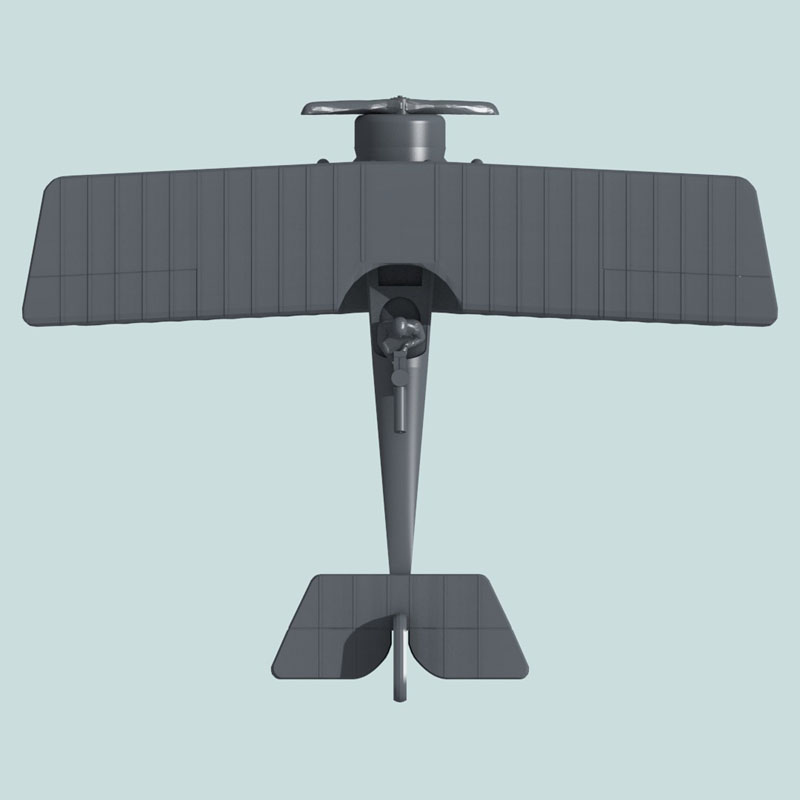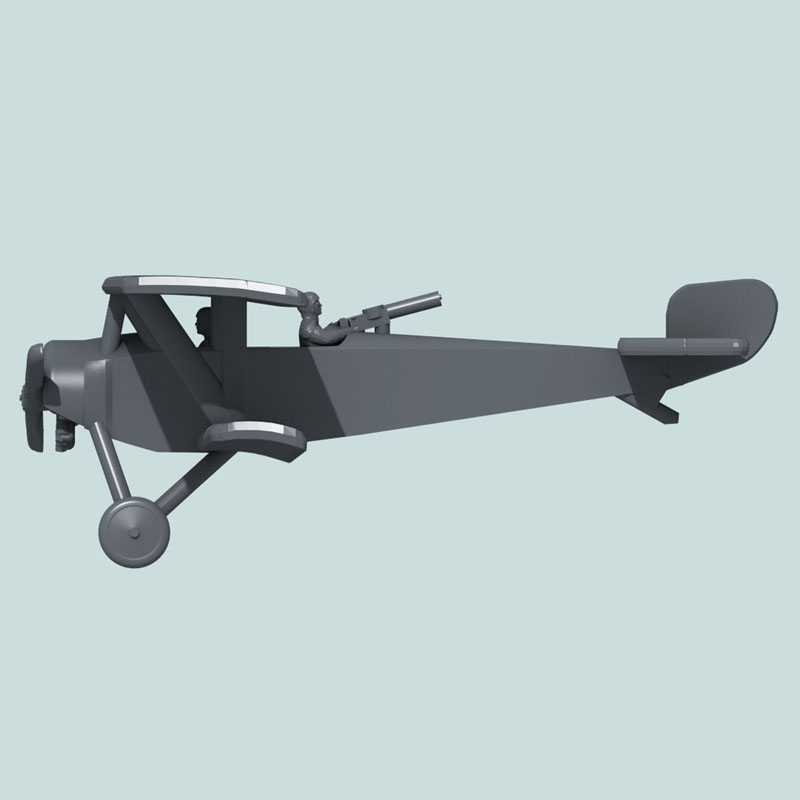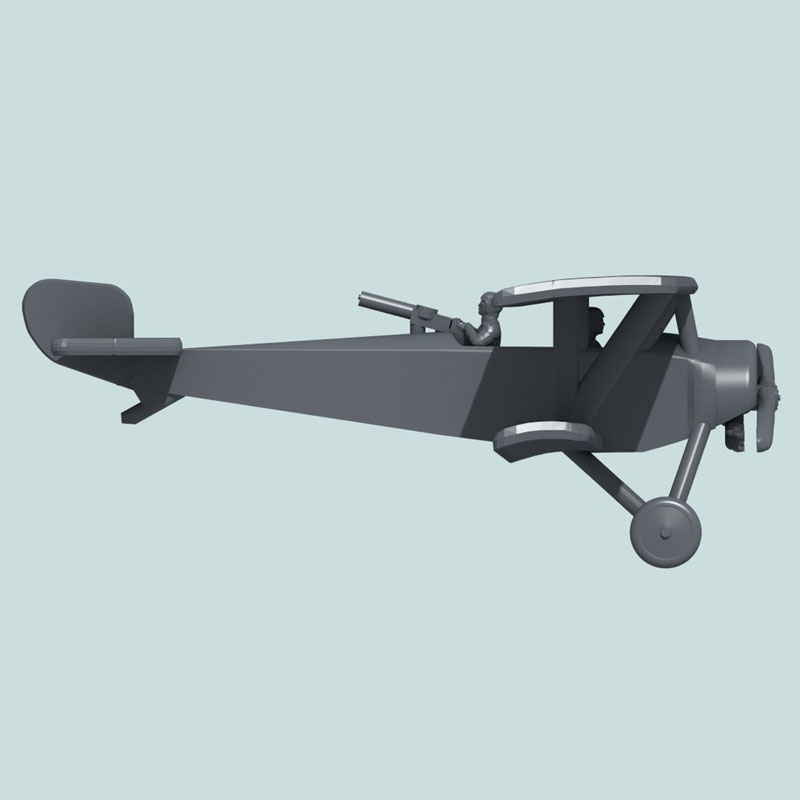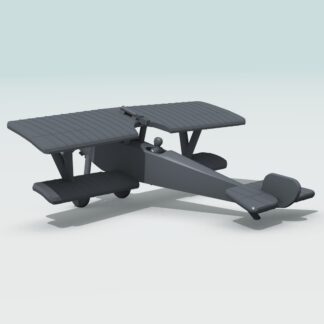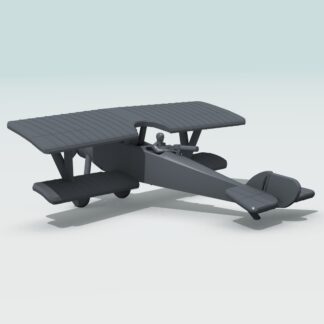Description
This is a paintable 1:144 scale model of a Nieuport 12. Since many painters choose their own mounting system, no peg is included on the plane. Pegs can be purchased separately in the Accessories section of this catalog.
Several variants of the Nieuport 12 are available: this standard two-seater, a two-Lewis version with upper-wing and Éteve-mounted gun, a single-seat fighter, a Beardmore-built British version, and a Nieuport 12bis with a 130hp engine.
The underpowered Nieuport 10 two-seater was succeeded in 1915 by the Nieuport 12, with a 110hp Clerget 9Z rotary. Later, the 130hp Clerget 9B was fitted (for the Nieuport 12bis), and Beardmore built 50 for use by the UK. Roughly 7200 Nieuport 10s and 12s were built, and they formed the bulk of some French units until they were phased out at the end of 1916. They served with at least 26 French Nieuport escadrilles, serving alongside Nieuport 11 and 17’s, and they were handed out in small numbers to non-Nieuport units as well. 194 Nieuport 12s were used by the Royal Navy Air Service as well as No.46 Squadron RFC. Small numbers were also used by Russia. They were not well-liked, but they gave good service until replaced by better machines.
Sometimes a Lewis machine gun was fitted for the pilot’s use, firing over the top wing at an angle to avoid the propeller. Since the pilot was seated too far forward to service the top-wing, it was up to the observer to stand lean forward to access that Lewis — surely a precarious proposition! Like the Nieuport 10, some Nieuport 12s were modified to be single-seat fighters with only the top-wing Lewis fitted.
For more data and gaming info on this plane, see https://linen.miraheze.org/wiki/Nieuport_12.
Shipping: Shipping varies from about US$7 to US$15 per order, depending on the destination country. See your cart for an exact number — the prices may vary with currency fluctuations. Orders over US$300 may get free shipping (but see the note on mixed materials).
Mixed Materials: Nylon prints are shipped from a different factory than resin prints, so if you place an order with a mix of Nylon and Resin, you will be charged shipping for each material, and each will arrive separately.
Taxes: Sales tax — where applicable — will be added for U.S. shipments. Value-added taxes (VAT) may (or may not) be collected by your postal carrier on receipt, which is known as “Delivery At Place”. Unfortunately, since my printing and shipping partner has no way of marking shipments as VAT-paid, this website cannot collect VAT on your behalf.
Customs: Most orders should be small enough to avoid customs duties, but you may want to check your local regulations. If duties are due, they may be collected by your postal carrier. E.U. customers may be able to avoid duties by keeping their order under €150.
No refunds are available, because your order is custom-printed when it is received. There is no inventory or stock to which it can be returned.
Reprints are available for planes damaged during shipping. See https://www.greatwarplanes.com/refund_returns/ for details.
Grey Resin: Models printed in Grey Resin material are printed with sprue-style supports while they are printed. The supports are removed in the factory before shipping. But be aware that some of the supports might be missed if they are mistaken for plane parts, and some of the attachment points might need smoothing before painting. I have seen good results — with almost no visible leftovers — in test prints. But this may not be universal because it depends on whoever is operating the printer the day your miniature is printed.
Bent Wings: Due to the need to protect miniatures during shipping, the miniatures may arrive with wings that are not perfectly straight (or, in the case of wings with dihedral, at the right angle)¹. If the warping is too severe, or if correcting it results in a broken plane, you can apply for a reprint as outlined above. To correct modest warping, you can heat the model with hot water or with a blow-dryer until the wings become pliable, straighten them, and then cool the model with cool water or room-temperature air. (I have used the blow-dryer method with good success.) I do not know what temperature is best — you’ll have to experiment, starting on the low side and using only gentle pressure. You just want to make the model pliable without it melting (too hot) or breaking under gentle pressure (too cool). Please use the normal precautions you’d use with any operation with hot water, air, and plastic.
Since — as you have gathered — you can bend the model when it’s under high temperature, I would suggest avoiding leaving your prints in a very hot environment such as a locked car under the summer sun.
¹ This was especially true during a period when the planes were shipped in a clamshell-plastic case, which should no longer happen.


